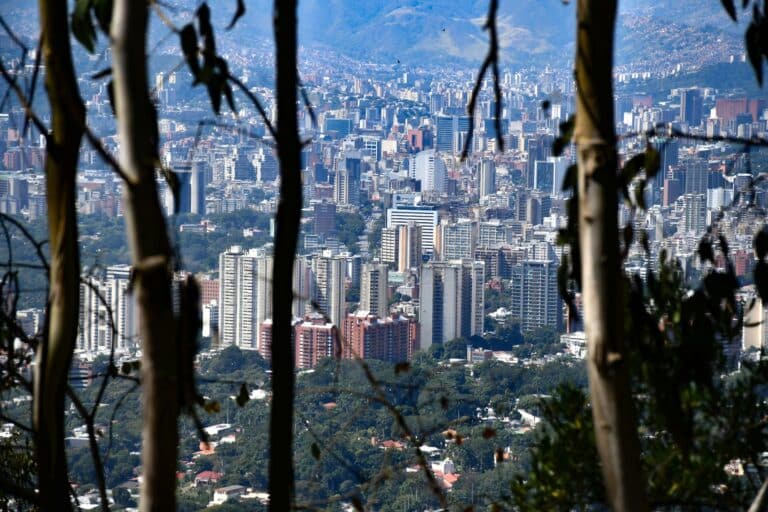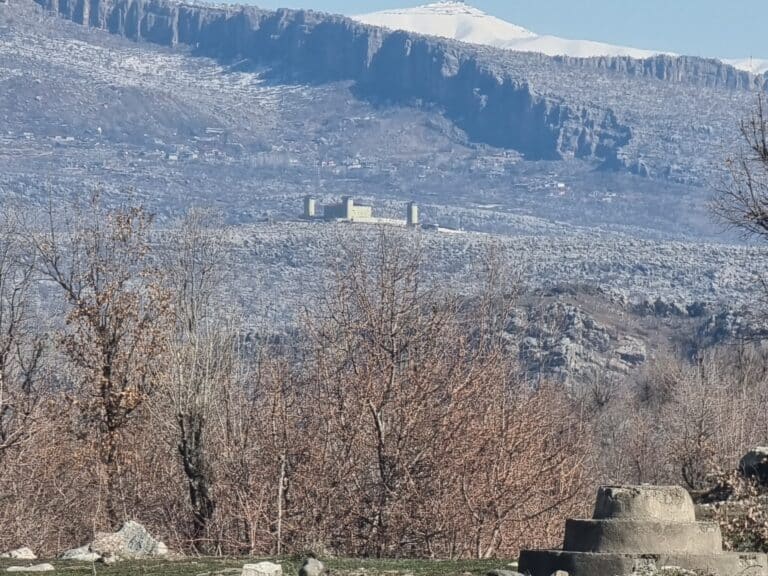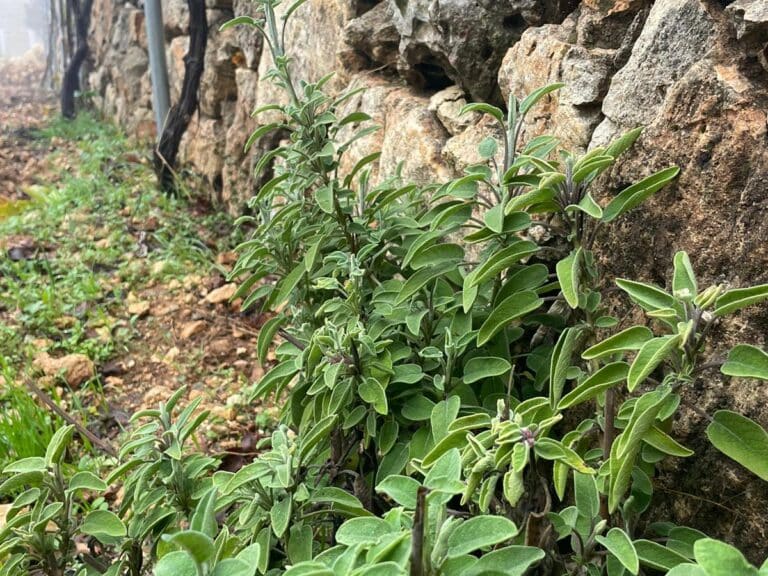Since 5 May, the CPT-Turtle Island Solidarity Network has accompanied Apache Stronghold in Oak Flat, Arizona, in the United States. Members of the San Carlos Apache describe Oak Flat (Chi’chil Biłdagoteel) as their most important sacred site. Amid a semi-arid landscape of mountains, canyons, and shrubland, Oak Flat is a place of sacred springs and ancient oak trees. It is where Apache people harvest medicinal plants and celebrate coming-of-age rituals. It is the place where Ga’an dwell — guardians, angels or messengers of Usen, the creator. Rock paintings, petroglyphs, remnants of ancient homes and gravesites testify to the presence of ancestors since time immemorial.
Oak Flat also happens to lie above a large copper deposit which Resolution Copper has lobbied for decades to exploit. In 2014, the company secured a backroom deal with Arizona Senators John McCain and Jeff Flake. The senators drafted legislation to transfer the land to Resolution Copper and pushed it through the United States Congress by adding it to a government-sponsored military funding bill. While the land transfer has not yet occurred, Resolution Copper has already begun digging shafts on adjacent land in order to drain the groundwater from below Oak Flat in preparation for mining. Apache Stronghold is trying to stop the project with a lawsuit arguing that mining at Oak Flat violates their First Amendment rights and the Religious Freedom Restoration Act.
In conversation with CPT members, Apache Stronghold leader Dr. Wendsler Nosie emphasized that this latest act of land theft must be understood in the context of centuries of colonial genocide. On 10 May, Wendsler took CPT members to visit the memorial at the site of the Old San Carlos, where Apache and other Indigenous people were confined as prisoners of war for decades. He explained with pride that the Apache were the last Indigenous people subjugated by invading US settlers and that the memory of rooted and traditional ways is not distant.
Because of mining, settlers displaced the Apache from their lands around Oak Flat 150 years ago, and they are continuing to do so today. In the 1870s, when silver and gold were found near Oak Flat, settlers came looking for precious metals. The federal government had promised to reserve a territory for the Apache in the Treaty of Santa Fe in 1852 but never established the boundaries of this territory. As the number of settlers increased, the government allowed mining on lands previously understood to belong to the Apache and shifted to an explicit policy of genocide. Settlers and the US Army attacked Apache people regularly in the following years; at one point, General James Carleton ordered Apache men “killed wherever found.”
Between 1871 and 1874, the US government forced 4000 Indigenous people in southeastern Arizona off their traditional lands and onto the Old San Carlos reservation. The government designated all of them as the “San Carlos Apache Tribe,” when in fact, they were from many clans and peoples, including Yavapais and Mohaves as well as 15 Apache clans. The people imprisoned in the Old San Carlos reservation called it “Hell’s 40 Acres”;—a barren land incapable of supporting traditional food plants.
The Old San Carlos site was gradually abandoned starting in the 1910s and 1920s when the US government prepared to build the Coolidge Dam. As the dam flooded the area, people had to move their ancestors’ graves. A mass grave containing at least 200 Apache people is now underwater. The water also covers the ruins of the military base where US soldiers served as prison guards to the Apaches.
The Old San Carlos memorial overlooks the dam reservoir and consists of several metal sculptures. The figure of an Apache horseback rider, with arms raised to the sky, stands ahead of four figures representing an Apache family, all gazing skyward. The children carry the implements of a land-based livelihood: the boy, a bow and arrows; the girl, a basket for harvesting. Plaques record the words of community members reflecting on the importance of facing the ugliness of the past in order to find healing for the future.

The words of an elder engraved on the memorial capture the grief of a lost way of life in which spirituality was infused into a close relationship with the land: “There was innocence amongst the people who were free in spirit, thoughts, word and everyday living. They lived almost every moment in spirituality and everything was in balance, and that was harmony.”
The words of a young mother express uncertainty about which ways to teach her son: those of her people or of the settler culture. “Do I assimilate? What do I teach my son when I am confused and frustrated?”
Looking to the future, the words of Naelyn Pike, Wendsler’s granddaughter, then nine years old, convey resolve to preserve land and culture: “[Let us] be the proudest people and help the rest of the world to understand all Usen’s creations. For we must save the spirit of Mother Earth.”
Wendsler explained how Apache Stronghold is resisting assimilation, keeping traditional ways alive through spiritual practice. He lamented settler people’s disconnection from the land, which must be protected to sustain life. Wendsler spoke of how the United States has offered the Apache people flowers—colorful things without substance—while taking their water. Time after time, the promised economic benefits of resource extraction amount to little, while the destruction of the land threatens the survival not only of the Apache but of all peoples.
Mining has destroyed much of the land around Oak Flat. The mines have used up vast amounts of groundwater, and tailings will contaminate the region for decades to come. “The only green place with food growing in it is Oak Flat,” Wendsler continued. “That is why the place is sacred. It’s because it is alive. All around is death, and they want to kill the last place that has life.”
Wendsler emphasized that Apache Stronghold’s fight is spiritual. “So many people practice rituals but have lost their connection to God,” he said. In returning to Oak Flat, his people are going back and living in the sacred place where they used to live among the Ga’an, the angels.
Naelyn Pike’s words preserved at the Old San Carlos memorial beautifully sum up the vision of resistance, healing, and renewal that Apache Stronghold seeks to put into practice:
I will no longer be a victim to the disaster that existed here. I will heal along with many others, and will push to regain our identity, and work to restore our people’s religion.
We must protect all Usen’s creations, as did our ancestors. So I ask each of you today to join us in the healing so that we may change tomorrow. Help me to give… my little sisters and those yet to be born, a chance to enjoy all that was created.
As Apache Stronghold faces the threat of mining under Oak Flat, people continue to gather on the land to pray. All of us, of all traditions, are invited to pray to save this sacred place. Through our prayer, those of us who are settlers on this land may begin the generational process of reconnecting with the Creator through creation.




